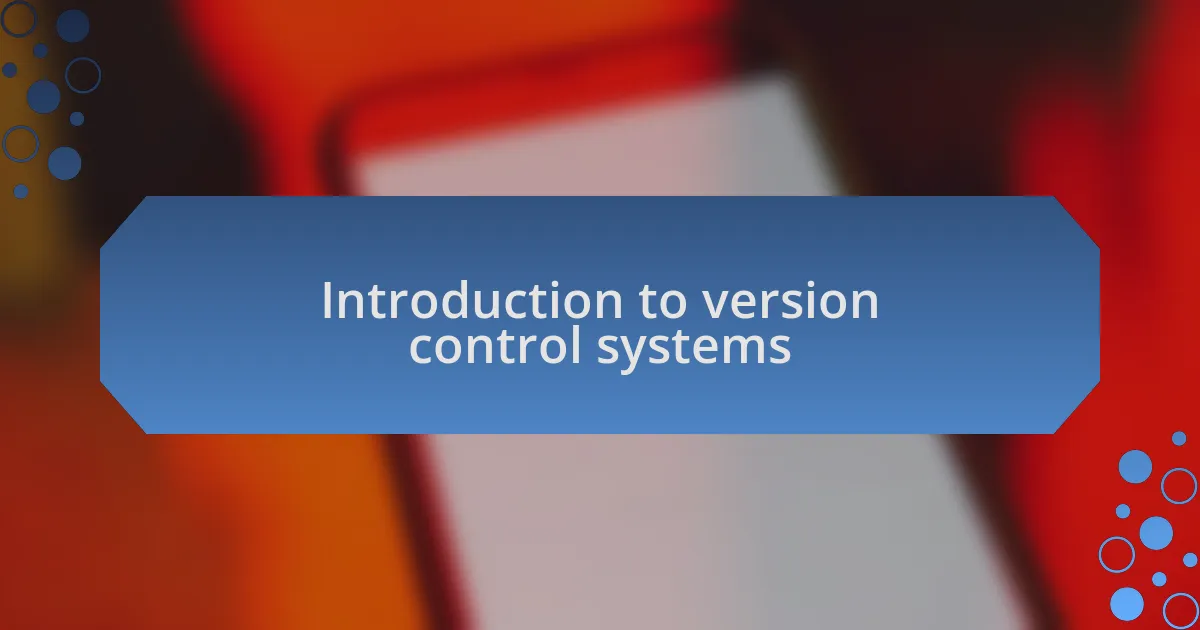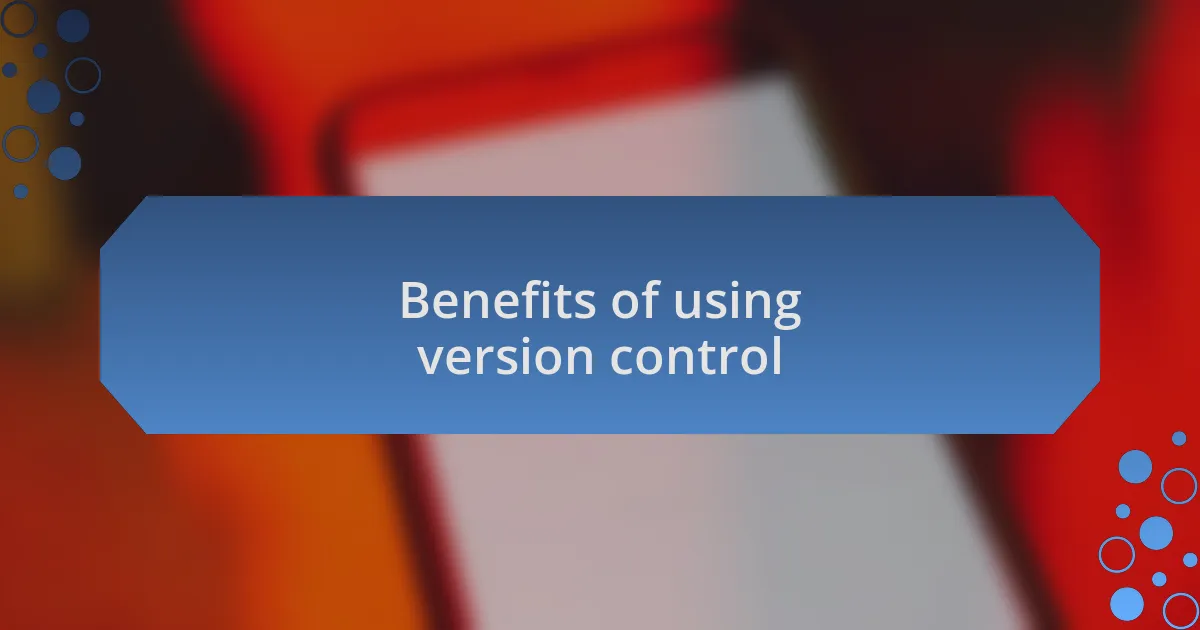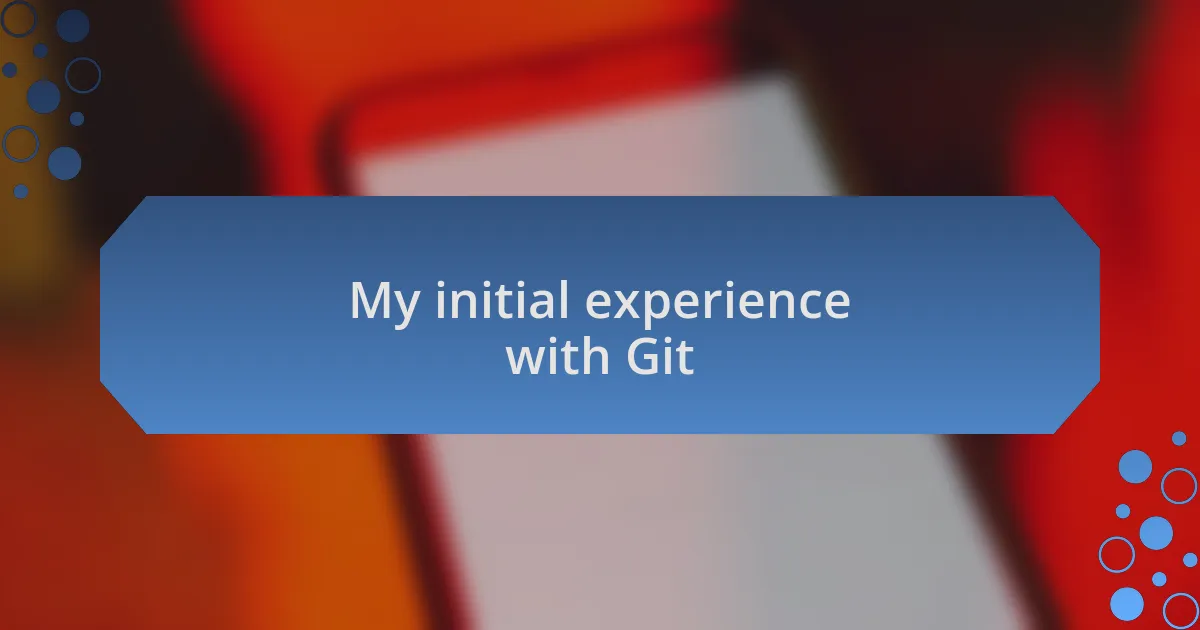Key takeaways:
- Version control systems enable collaboration by allowing multiple contributors to work simultaneously without overwriting each other’s changes.
- They provide the ability to revert to previous code versions, reducing anxiety and facilitating debugging.
- Version control fosters accountability by tracking contributions, which streamlines communication and enhances productivity within teams.
- Initial experiences with Git highlight the learning curve and the empowering nature of branching, as it allows experimentation without risking the main project.

Introduction to version control systems
Version control systems are essential tools for anyone serious about managing changes in their projects, particularly in software development. They allow multiple collaborators to work on code simultaneously without stepping on each other’s toes – an absolute game-changer for teams. I still remember the stress I felt in a group project where we were bound to overwrite each other’s work until we adopted a version control system.
Imagine being able to revert back to a previous version of your code after a bug appears, simply because you can track every change made. It’s like having a safety net in place; I can’t tell you how many late nights I’ve saved by knowing I could roll back my changes and retrieve that pivotal line of code. Have you ever spent hours debugging, only to realize the issue stemmed from a modification you made days ago? Version control systems help alleviate that anxiety by offering clarity through their history of changes.
In my experience, they not only facilitate collaboration but also enhance personal productivity. Each new version becomes a snapshot of your progress, which is both satisfying and motivating to review. It’s fascinating how these tools not only document but also narrate the journey of your project. It sparks a bit of pride, don’t you think? Understanding how to leverage these systems can dramatically improve your workflow and overall project management.

Benefits of using version control
When it comes to collaboration, version control systems eliminate a lot of the chaos that can arise when multiple people are involved. I recall a time when I was part of a team project where we would send files back and forth, leading to confusion and mistakes. Once we integrated version control, our workflow transformed completely; each team member could contribute their changes seamlessly and confidently, knowing that we could merge our work without fear of overwriting someone else’s contributions. Isn’t it empowering to tackle projects as a team with that level of assurance?
One of the most impressive benefits is the ability to experiment without fear. I remember a project where I tried a new approach that ultimately didn’t pan out, but instead of causing a setback, I simply rolled back to my last stable version. This freedom to innovate truly boosts creativity. It’s like having a safety blanket that allows us to explore new ideas without worrying about irreversible mistakes.
Furthermore, version control fosters accountability within teams. I’ve experienced situations where tracking who made what change not only clarifies the project history but also encourages ownership of tasks. It gives you this sense of pride when you see which contributions matter most in the evolution of the project. Don’t you agree that knowing who to turn to for specific updates can streamline communication and enhance overall productivity?

My initial experience with Git
When I first started using Git, I felt a mix of excitement and confusion. The concepts of commits, branches, and merges were new to me, and it felt a bit overwhelming. However, once I pushed my first commit, there was a thrill in seeing my work versioned and tracked; it was like taking my first step on a path to mastering a powerful tool.
The moment I realized the magic of branching was particularly enlightening. One day, I created a branch for a feature I was experimenting with, thinking I’d ruined my code when, in fact, I had simply diverged from the main line of development. It was a lightbulb moment when I understood I could make changes without affecting the main project. Doesn’t it feel liberating to know you can test your ideas without fear of messing things up?
I also remember battling with the command line interface, wondering if I’d ever get the hang of it. That initial struggle was frustrating. Yet, as I practiced, I found that these commands opened doors to efficient workflow management. Each learning curve brought a sense of accomplishment, reinforcing my belief that persistence pays off. It’s satisfying to look back and see how those early challenges led to a deeper understanding and confidence in using Git.